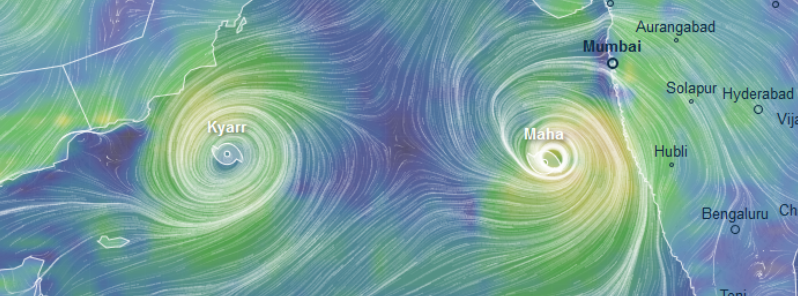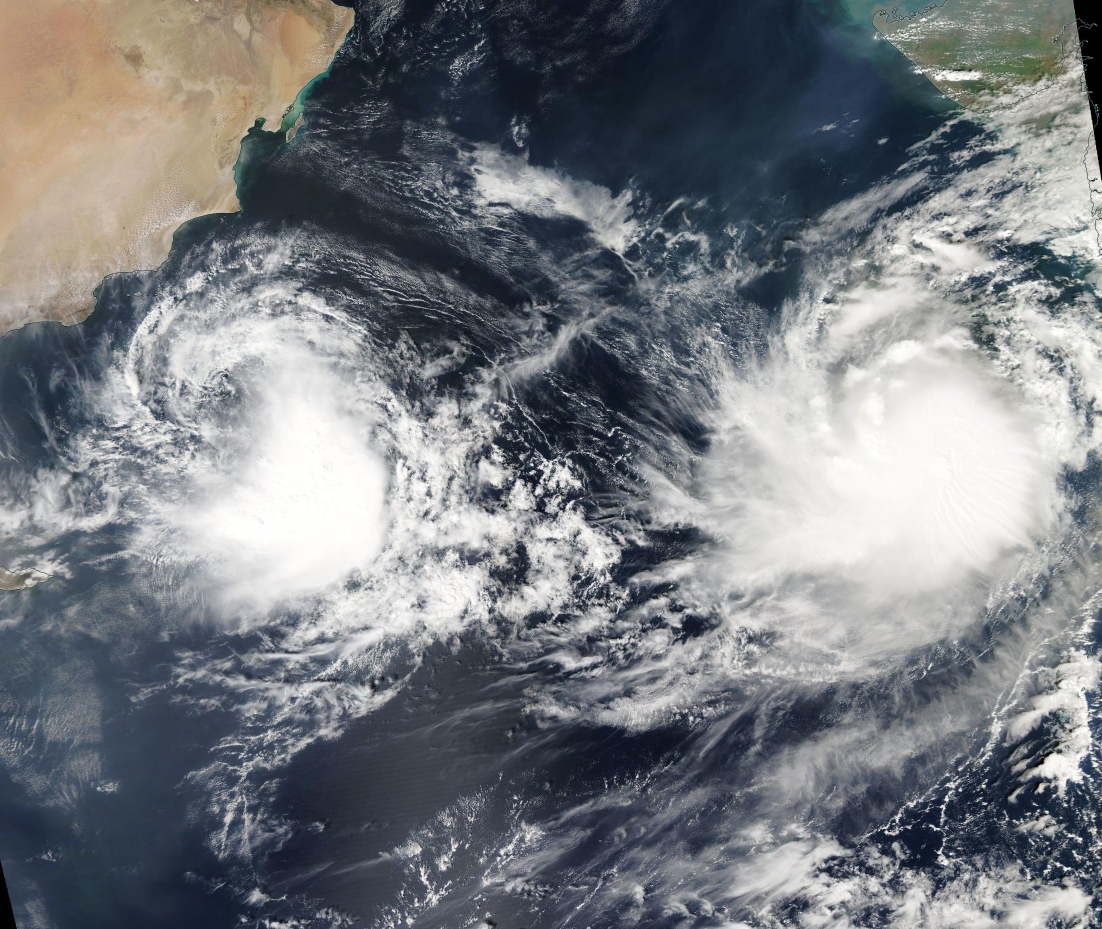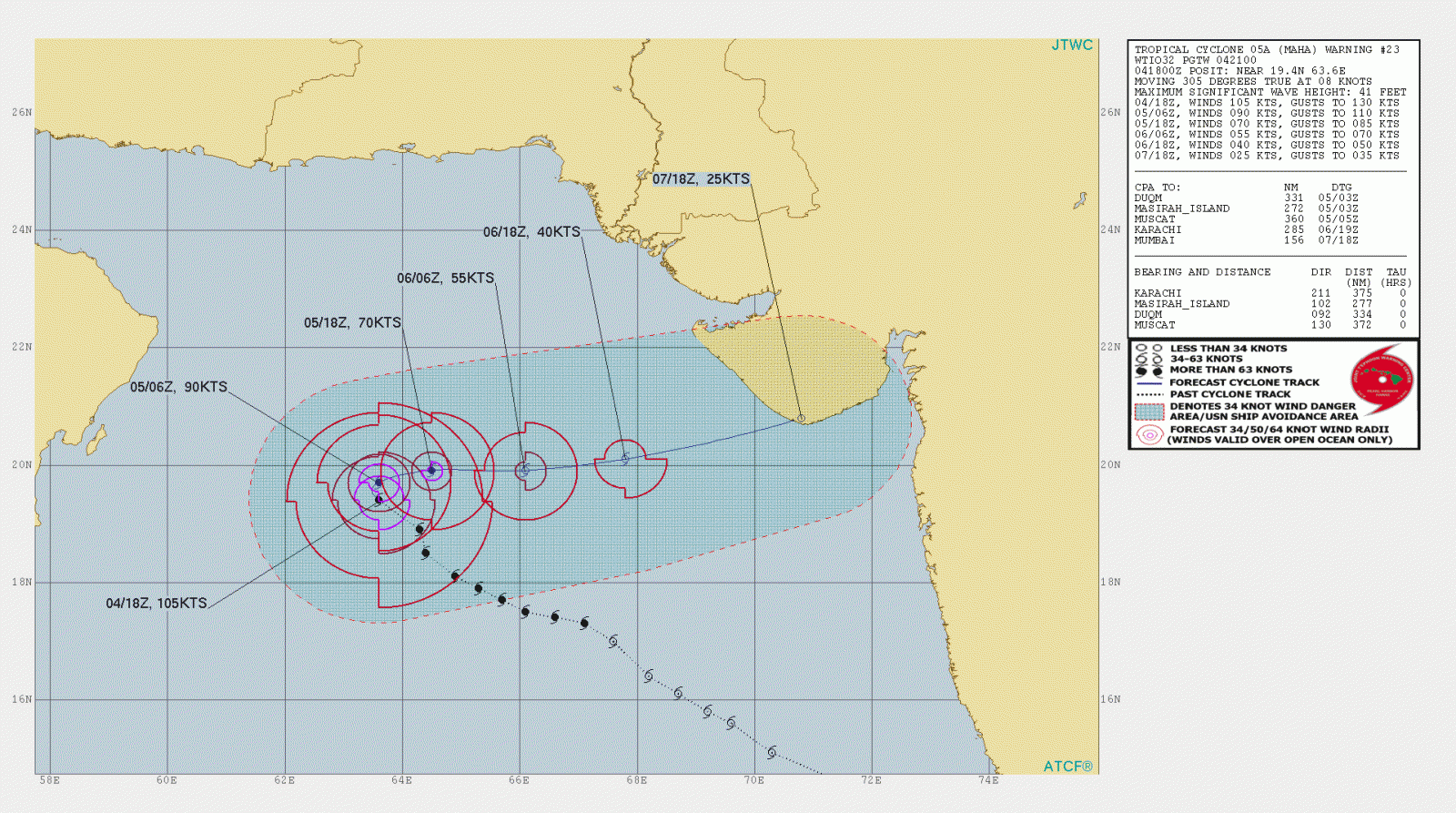2019 North Indian Ocean cyclone season breaks named storm days record

The Arabian Sea witnessed a rare simultaneous formation of two tropical cyclones – Kyarr on October 24 and Maha on October 30, 2019, the first since 1965. With them, the 2019 North Indian Ocean cyclone season has generated 28 named storm days by November 4, breaking the old record of 21 days through November 4 set in 1996.
On Thursday, October 31, IMD confirmed that this was the first recorded case of two cyclones happening simultaneously in the Arabian Sea.
In its weekly weather status and outlook report, the agency stated that India received 200% excess rainfall in the week, ending on October 30. Central India registered the maximum departure with 572% excess rainfall in the past week.
For the overall rainfall in October, India received 44% excess rainfall, while the central received 99% excess and 54% for southern regions.
Tropical Cyclone "Kyarr" formed on October 24 and underwent rapid intensification, soon becoming the Arabian Sea's 2nd strongest storm on record. It peaked on Sunday, October 27 west of India as a category 4 storm with 240 km/h winds (150 mph) – Super Cyclonic Storm, the first since 2007’s category 5 Tropical Cyclone "Gonu."
The system began slowly weakening on October 29 as it headed southwest toward Somalia. It dissipated off the coast of Somalia on November 1.
Tropical Cyclone "Maha" formed on October 30. It strengthened into a Very Severe Cyclonic Storm on November 3 and into Extremely Severe Cyclonic Storm on November 4.

Tropical cyclones Kyarr (left) and Maha (right) on November 1, 2019. Credit: NASA Aqua/MODIS
On November 3, Maha reached Category 3+ hurricane equivalent, the third of the season to date, tying the year with 1999 for the most North Indian Ocean major hurricane through November 3 since records began in 1972, according to meteorologist Philip Klotzbach.
#Cyclone #Maha has now reached major (Category 3+) #hurricane strength – the 3rd of the 2019 North Indian Ocean cyclone season to date. This ties 2019 with 1999 for the most North Indian Ocean major hurricanes through November 3 on record (since 1972) pic.twitter.com/WmP8KzBCFp
— Philip Klotzbach (@philklotzbach) November 4, 2019
The cyclone is expected to weaken as it turns and runs toward India. However, an orange alert for heavy rainfall is in effect for multiple districts of Saurashtra and south Gujarat, effective November 6 and 7.

As of November 4, the 2019 North Indian Ocean has already generated 28 named storm days, shattering the old record of 21 days through November 4 set in 1996, Klotzbach said.
The season has so far had 5 Severe Cyclonic Storms, a record high, and 2 Extremely Severe Cyclonic Storms. It had 1 Super Cyclonic Storm, also a record high, but tied with 1989, 1990, 1991, 1999 and 2007.
The basin's first named storm was Pabuk on January 4, making it the earliest-forming cyclonic storm in a season, surpassing Hibaru in 2005.
Featured image credit: ventusky.com

Julie thank you for the detailed report! I hope to see more of you writing again soon! Keep up the great work! 🙂 Harlan